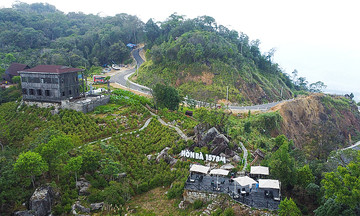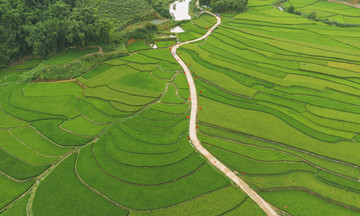Under the shade of colorful tarpaulin tents, Mui Ne's fishermen diligently repair boats and untangle nets, as described by Daniel Stables, a reporter for National Geographic (NatGeo). In the shallows, women in conical hats sift through the freshly caught seafood – sea snails, shrimp, blue crabs – and stir anchovies in large vats, fermenting them into fish sauce. Mui Ne is renowned for its fish sauce, and even in its raw form, the pungent aroma permeates the air, almost palpable.
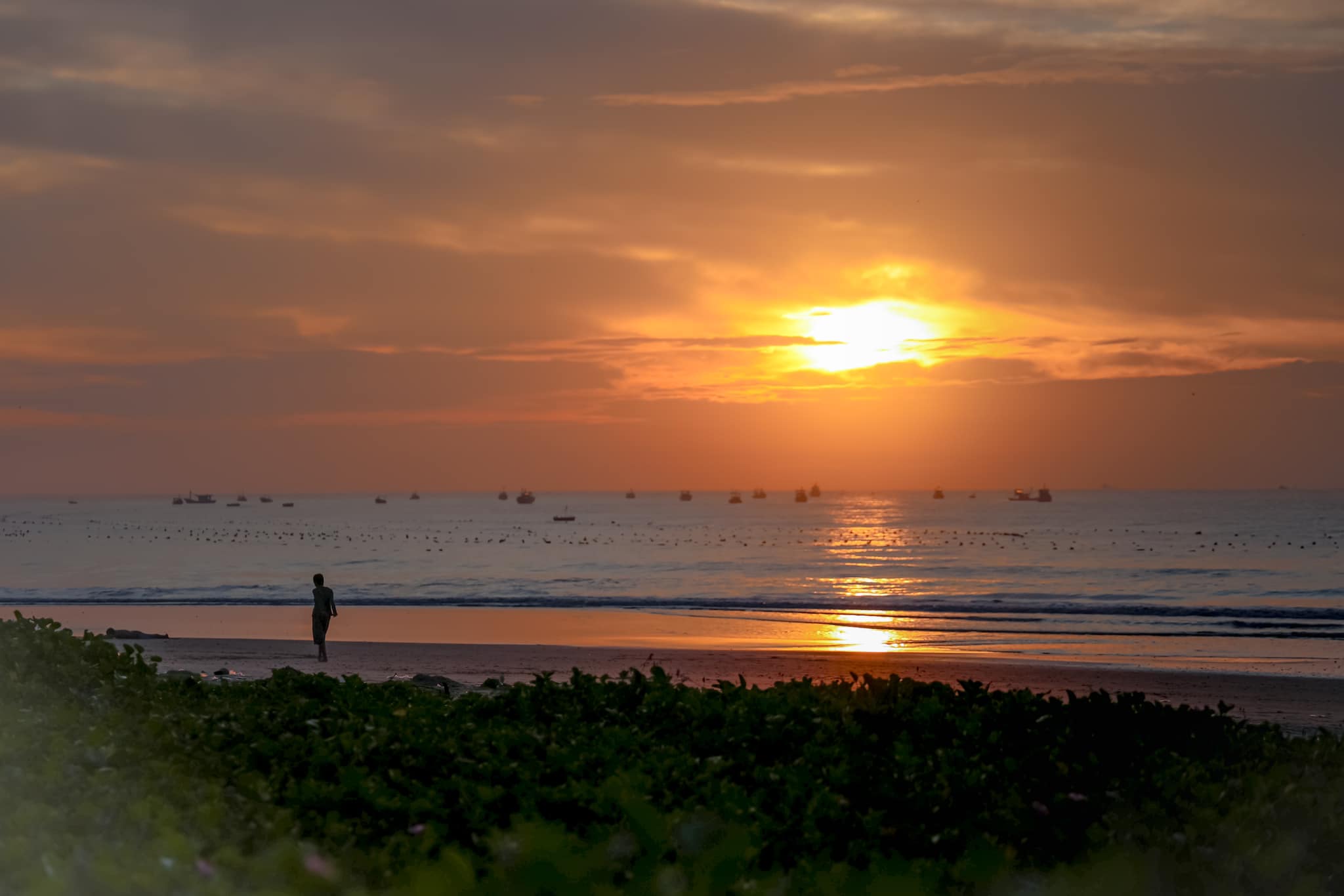 |
Mui Ne at dawn. Photo: Lu Duy Tuong. |
On the water, round coracles and long wooden boats, painted in vibrant yellows, blues, and reds, bob gently at anchor. Each boat's prow bears a pair of sharply painted eyes, seemingly watching every move of strangers. Locals believe these are "divine eyes" – symbols of Ca Ong (Whale God), the revered sea deity. Mui Ne fishermen worship whales as the God of the South Sea, who rescues fishermen caught in storms. This folk belief predates the arrival of Buddhism in Vietnam over 2,000 years ago.
Once a tranquil fishing village, Mui Ne has rapidly developed in recent years, with high-end resorts and watersports clubs springing up along the 8+ km beach south of the village. Its growing reputation as a watersports destination is fueled by the same winds that once prompted prayers for safety, now attracting thrill-seeking tourists. Mui Ne experiences strong winds approximately 260 days a year, with two distinct wind seasons – the southwest monsoon from June to September, and the northeast monsoon during the remaining months – creating ideal conditions for windsurfing, kitesurfing, sailing, and surfing.
Nguyen Tan Hung, a kitesurfing instructor at Mui Ne Sailing Club, witnessed this transformation firsthand. Born into a fishing family, he sailed with his father, growing up on boats adorned with the "divine eyes." Hung says he has "seawater in his blood". He is a firm believer in Ca Ong, as his father witnessed the sea deity rescuing people during a storm.
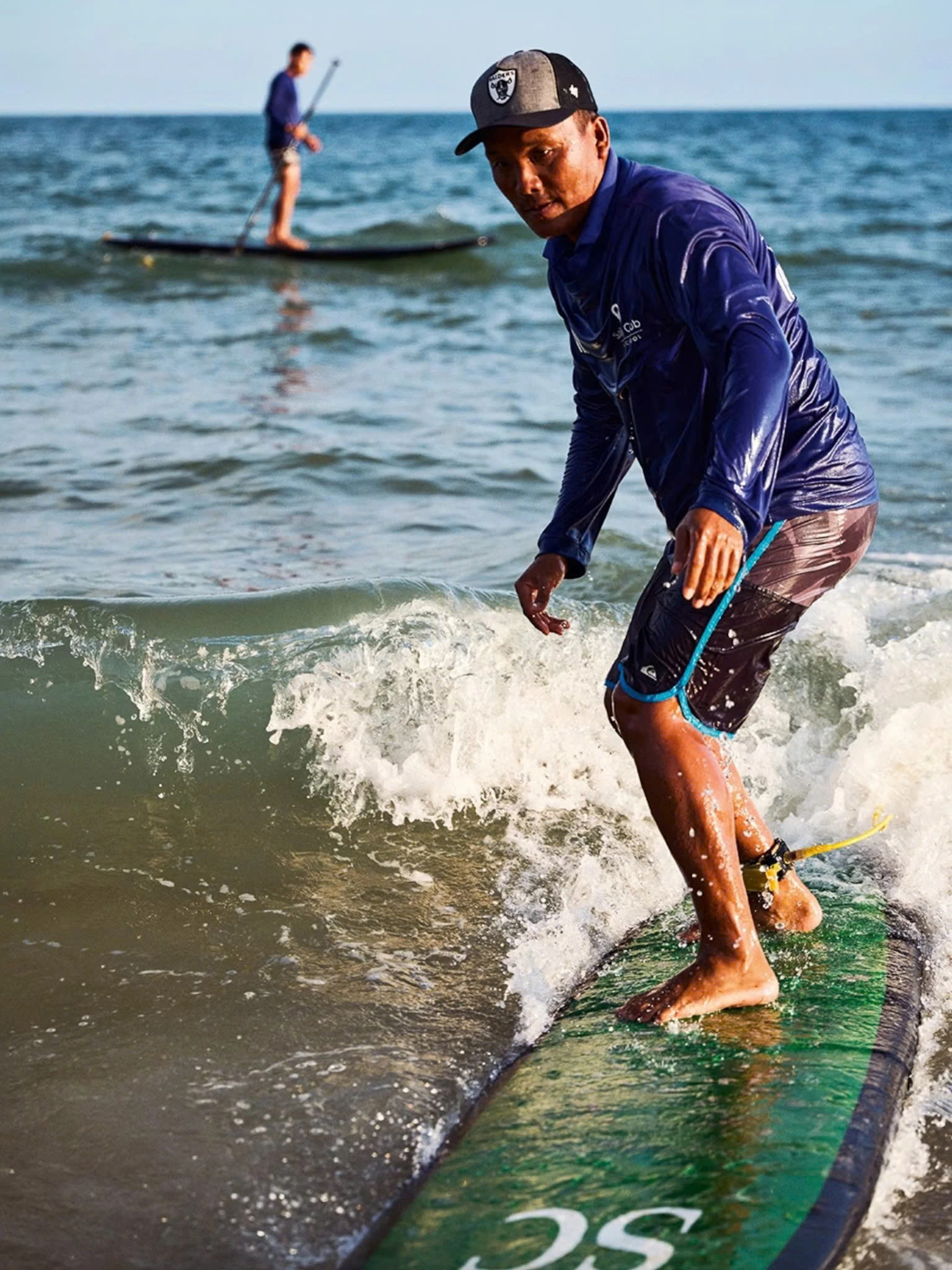 |
The peaceful scene of Mui Ne through the eyes of a National Geographic photographer. Photo: Ulf Svane. |
Hung vividly recalls the turning point in 1995 when thousands flocked to Mui Ne to witness a total solar eclipse. "Before that, nobody knew Mui Ne. But after that day, everything changed," he says.
Visitors were captivated by the sweeping red and white sand dunes, the cool rows of casuarina trees, and the calm sea. Watersports enthusiasts, however, were drawn to the consistent, strong, yet predictable winds. Mui Ne emerged as a more tranquil watersports destination compared to the bustling hubs in Thailand or the Philippines.
Beyond the sea and wind, Mui Ne boasts Van Thuy Tu Temple, home to thousands of whale skeletons collected along the shore over centuries. According to Ly Nham, the temple's custodian, it was built in 1762. Behind the main altar, a large glass cabinet displays rows of whale jawbones, some up to 4 m long. In the adjacent room lies a 20+ m whale skeleton, believed to be the largest in Southeast Asia.
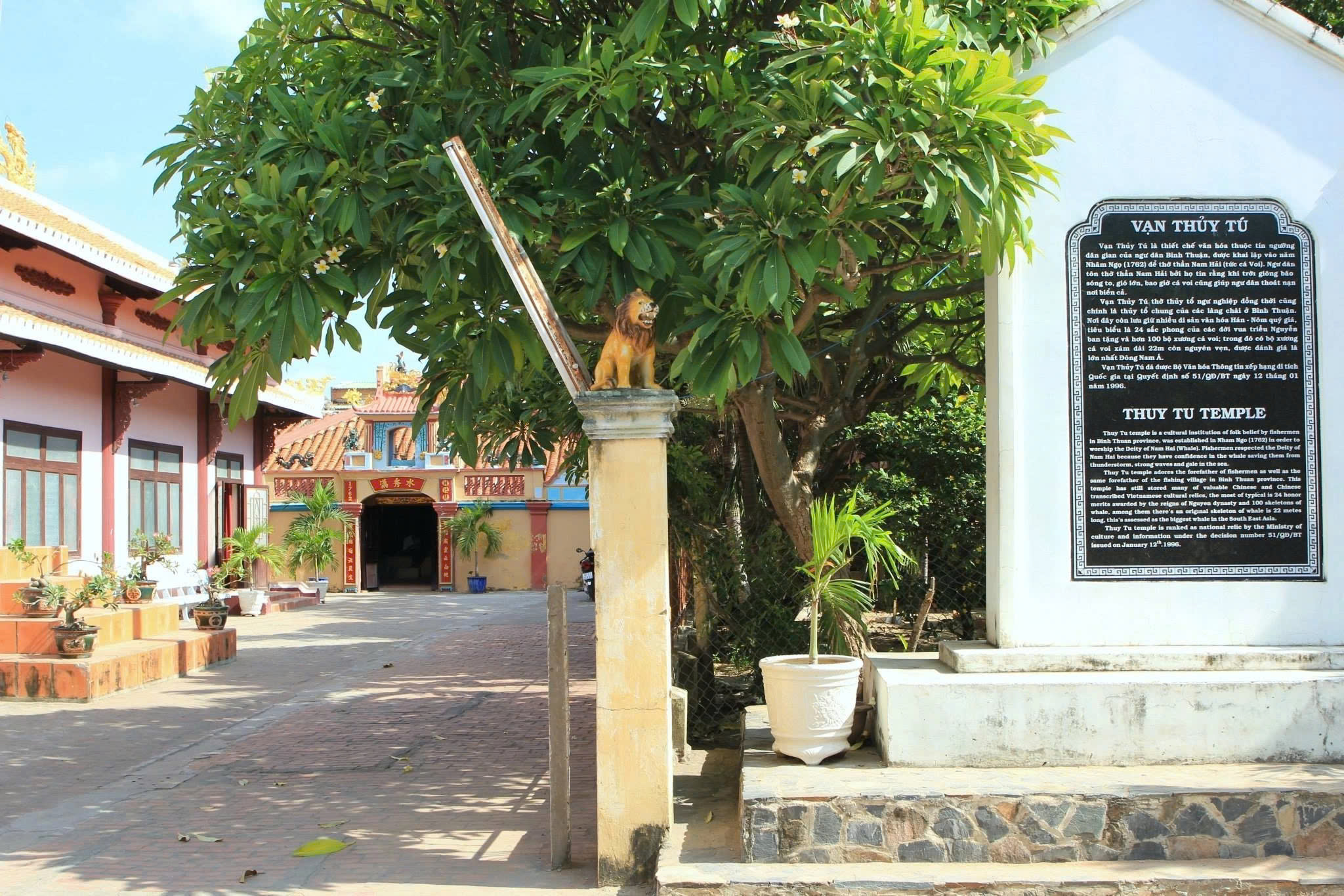 |
Van Thuy Tu Temple - the whale worshiping place in Mui Ne. Photo: Khanh Bang. |
"This skeleton washed ashore in 1800, but Ca Ong has been saving fishermen long before that," Nham says, adding, "To us, Ca Ong is the guardian angel of the sea."
As dusk descends, the setting sun paints Fairy Stream, a small creek winding through picturesque red clay formations, in golden hues. The waves subside, the wind stills, and Mui Ne returns to its pristine tranquility. According to Hung, this week Ca Ong is holding back the wind for the fishermen, not the windsurfers.
Tuan Anh (According to National Geographic)



